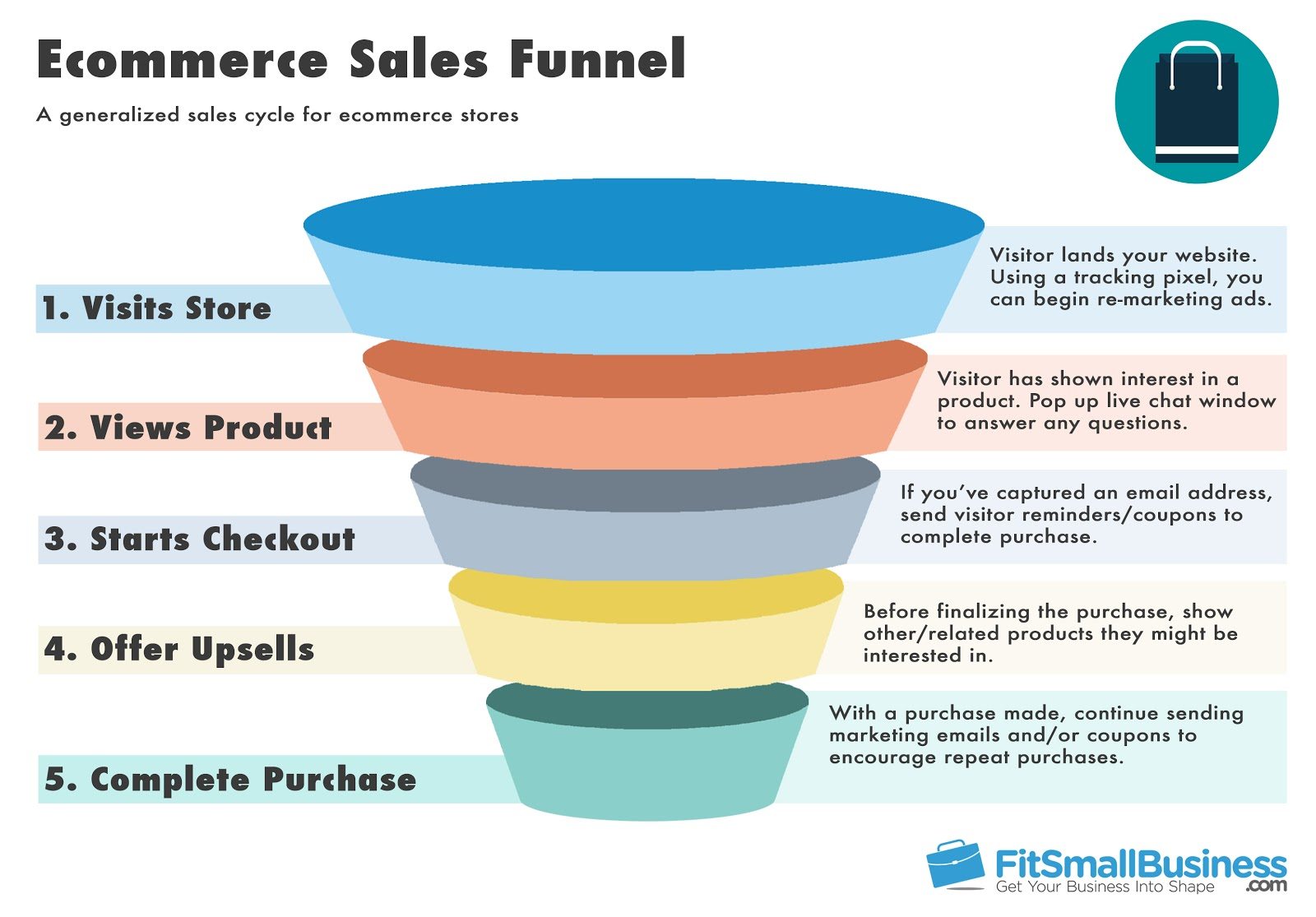Crafting Effective eCommerce Email Marketing Funnels that Convert
Dive into the world of eCommerce email marketing funnels that convert with this captivating introduction. Explore the ins and outs of creating engaging email sequences, crafting compelling content, leveraging automation, and optimizing for conversions to drive business success.
Discover the key strategies and best practices that can help you build effective email marketing funnels that drive conversions and boost your online sales.
Understanding eCommerce Email Marketing Funnels

eCommerce email marketing funnels are a series of steps or stages that a customer goes through via email communication, with the ultimate goal of converting them into paying customers. These funnels are designed to guide the customer from awareness of a product or service to making a purchase decision.
Examples of Successful eCommerce Email Marketing Funnels
- Abandoned Cart Emails: These emails remind customers of items they left in their cart, encouraging them to complete the purchase.
- Welcome Series: A series of emails sent to new subscribers to introduce them to the brand, products, and services.
- Promotional Campaigns: Emails promoting discounts, sales, or new products to drive conversions.
Importance of Email Marketing Funnels in Driving Conversions
Email marketing funnels play a crucial role in driving conversions for eCommerce businesses by nurturing leads, building relationships with customers, and encouraging repeat purchases. By delivering targeted and personalized content at each stage of the funnel, businesses can increase engagement and ultimately drive sales.
Designing an Effective Email Sequence
When it comes to designing an effective email sequence for eCommerce email marketing funnels, it is essential to carefully plan and strategize each stage to ensure maximum conversion rates. Here, we will detail the key stages of an eCommerce email marketing funnel, share tips on structuring a high-converting email sequence, and discuss the role of personalization in email marketing funnels.
Key Stages of an eCommerce Email Marketing Funnel
- 1. Awareness: Introduce your brand and products to potential customers through engaging content and informative emails.
- 2. Interest: Nurture leads by providing valuable information, product recommendations, and exclusive offers to keep them engaged.
- 3. Decision: Encourage customers to make a purchase by highlighting the benefits of your products, showcasing customer reviews, and offering discounts.
- 4. Action: Prompt customers to take action by creating a sense of urgency, such as limited-time offers or low stock alerts.
- 5. Retention: Build customer loyalty through post-purchase emails, personalized recommendations, and special promotions for repeat purchases.
Tips for Structuring a High-Converting Email Sequence
- 1. Segment your email list based on customer behavior, preferences, and purchase history to send targeted and relevant emails.
- 2. Use engaging subject lines and compelling content to grab the recipient's attention and encourage them to open the email.
- 3. Include clear call-to-action buttons that guide customers towards the desired action, whether it's making a purchase or signing up for a webinar.
- 4. A/B test different elements of your emails, such as subject lines, images, and copy, to optimize performance and improve conversion rates.
The Role of Personalization in Email Marketing Funnels
Personalization plays a crucial role in email marketing funnels as it allows you to tailor your messages to the individual recipient, increasing relevance and engagement. By using customer data to personalize emails with the recipient's name, past purchase history, and product recommendations, you can create a more personalized and targeted experience that resonates with customers and drives conversions.
Crafting Compelling Email Content

Creating engaging content is crucial for the success of your eCommerce email marketing campaigns. Let's explore the types of content that work best, how to craft compelling subject lines and email copy, as well as the importance of visual elements in your email content.
Types of Content that Work Best
- Product Recommendations: Personalized product suggestions based on customer preferences and browsing history can drive conversions.
- Sales and Promotions: Highlighting special offers, discounts, and sales events can entice customers to make a purchase.
- Customer Reviews and Testimonials: Sharing positive feedback from satisfied customers can build trust and credibility.
- How-to Guides and Tutorials: Providing valuable content that educates and adds value to the customer experience.
Creating Engaging Subject Lines and Email Copy
- Subject Lines: Keep them concise, clear, and engaging. Use personalization, urgency, and curiosity to capture the recipient's attention.
- Email Copy: Write in a conversational tone, focusing on benefits rather than features. Keep paragraphs short and to the point, with a clear call-to-action.
Significance of Visual Elements in Email Content
Visual elements such as images, videos, and GIFs can make your emails more visually appealing and engaging. They can showcase products, convey emotions, and reinforce your brand identity
Leveraging Automation and Segmentation

Automation and segmentation play crucial roles in the success of eCommerce email marketing campaigns. By utilizing these strategies effectively, businesses can personalize their communication with customers, improve targeting, and drive more conversions.
Benefits of Automation in eCommerce Email Marketing
Automation in email marketing allows businesses to send targeted messages to customers at the right time without manual intervention. Some benefits of automation include:
- Increased efficiency and time savings by automating repetitive tasks such as welcome emails, order confirmations, and follow-ups.
- Improved customer engagement through personalized content based on customer behavior and preferences.
- Higher conversion rates by sending relevant messages to the right audience segments.
- Enhanced customer experience by providing timely and valuable information to customers throughout their journey.
Effective Email Segmentation Strategies
Segmentation involves dividing your email list into targeted groups based on specific criteria such as demographics, purchase history, or engagement level. Effective segmentation strategies include:
- Segmenting based on customer behavior, such as browsing history, purchase frequency, or cart abandonment, to send relevant product recommendations and reminders.
- Segmenting by demographics like age, location, or gender to tailor content and promotions to specific customer groups.
- Using RFM (Recency, Frequency, Monetary) segmentation to identify high-value customers and create personalized offers to increase their loyalty and lifetime value.
- Implementing dynamic segmentation to update customer lists in real-time based on their interactions with your emails and website.
Personalizing Emails and Improving Targeting with Data
Personalization is key to engaging customers and driving conversions. By leveraging data, businesses can create highly targeted and relevant email campaigns. Tips for using data to personalize emails include:
- Utilizing purchase history and browsing behavior to recommend products that match customers' interests and preferences.
- Adding dynamic content based on customer data, such as name, location, or past purchases, to create a personalized experience for each recipient.
- Testing and analyzing email performance metrics like open rates, click-through rates, and conversions to optimize targeting and content for better results.
- Using A/B testing to experiment with different subject lines, images, and calls to action to identify the most effective strategies for each customer segment.
Optimizing for Conversion
When it comes to optimizing eCommerce email marketing funnels for higher conversion rates, there are several tactics you can implement to maximize the effectiveness of your campaigns.
A/B Testing Strategies for Email Campaigns
A/B testing is a crucial strategy to determine what elements of your email campaigns are resonating with your audience and driving conversions. By testing different variations of subject lines, content, calls to action, and visuals, you can identify the most effective combinations that lead to higher engagement and conversions.
- Test subject lines: Experiment with different wording, lengths, and personalization to see which ones result in higher open rates.
- Test content: Try out different messaging tones, lengths, and formatting to understand what type of content your audience responds to best.
- Test calls to action: Test variations in placement, wording, color, and design of your CTAs to determine which ones drive the most clicks and conversions.
- Test visuals: Evaluate the impact of using images, videos, GIFs, or infographics in your emails to see how they influence engagement and conversion rates.
Importance of Tracking and Analyzing Metrics for Optimization
Tracking and analyzing metrics is essential for optimizing your eCommerce email marketing funnels. By monitoring key performance indicators (KPIs) such as open rates, click-through rates, conversion rates, and revenue generated, you can gain valuable insights into the effectiveness of your campaigns and make data-driven decisions to improve results.
It's crucial to regularly review and analyze your email marketing metrics to identify trends, patterns, and areas for improvement.
Last Word
In conclusion, mastering the art of eCommerce email marketing funnels that convert is essential for any online business looking to succeed in today's competitive market. By implementing the right strategies and techniques Artikeld in this discussion, you can take your email marketing efforts to the next level and achieve impressive results.
Top FAQs
What are some common types of content that work best in eCommerce email marketing?
Common types of content that work well include product recommendations, customer testimonials, limited-time offers, and educational content related to your products or industry.
How important is personalization in eCommerce email marketing funnels?
Personalization plays a crucial role in creating targeted and relevant email campaigns that resonate with your audience. By personalizing content based on user behavior and preferences, you can significantly improve engagement and conversion rates.
What are some key benefits of using automation in eCommerce email marketing?
Automation helps streamline the process of sending personalized emails to your subscribers at the right time, leading to increased efficiency, better engagement, and ultimately higher conversion rates.

